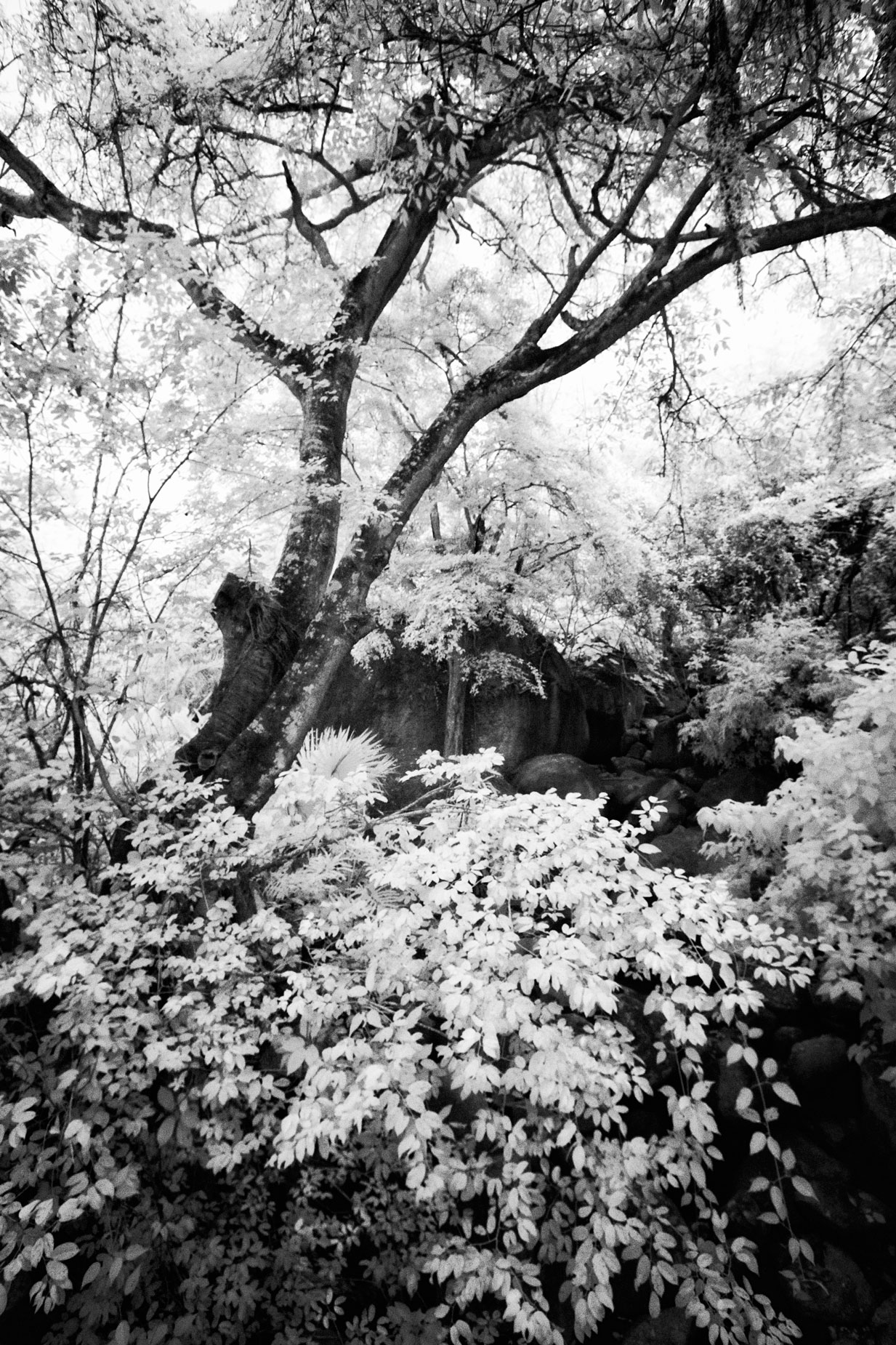Today’s Post by Joe Farace
“Which is probably the reason why I work exclusively in black and white… to highlight that contrast.” — Leonard Nimoy
The medium of infrared has the power to transform seemingly mundane subject matter into unforgettable images. Everyday scenes you might walk by and never think of photographing, take on a more dramatic look when seen in infrared light.
A reader once wrote me thanking me for introducing him to IR photography because the only time he had for photography was on his lunch hour, which just happens to be the best time to make infrared images! This is not the best times to make conventional images but these are the “golden hours” for infrared photography. If you need a rule of thumb, try this: the best time of day to shoot digital IR is when it’s the worst time of day to shoot normal images.
 Under infrared light, tree leaves typically appear to be white. This effect is produced by deciduous trees and grass because they reflect the sun’s infrared energy instead of absorbing it. To give foliage that famed infrared glow you need to shoot at time of day when there’s more sun on the scene, which puts your best shooting time around mid-day!
Under infrared light, tree leaves typically appear to be white. This effect is produced by deciduous trees and grass because they reflect the sun’s infrared energy instead of absorbing it. To give foliage that famed infrared glow you need to shoot at time of day when there’s more sun on the scene, which puts your best shooting time around mid-day!
How I Made this photograph: The Jardín Botánico de Acapulco is a lovely place to visit and make infrared images, which I was able to do on one of my two visits to my favorite Mexico destination. At a height of 200 to 400 meters above sea level, Acapulco’s botanical garden includes six hectares— One hectare = 2.471 acres.—of subtropical deciduous forest. It has comfortable trails where you can see two streams, a collection of palms and cycads, desert plants, hardwoods, as well as flowering and fruit trees, shrubs, heliconias and gingers, bromeliads, aeroids, ferns and vines.
This infrared photograph was made with a Canon EOS D60 that was converted to infrared using a 720nm filter by a company that’s no longer in business. The lens used was Tamron’s AF 11-18mm f/4.5-5.6 Aspherical LD Di II SP at 11mm. Exposure was 1/60 sec at f/9.5 and ISO 400.
Filters for Infrared
I’ve written here before abut the (fallible) “TV Remote Test” but the only bulletproof infrared test of your camera’s infrared capabilities is to stick an IR filter in front of the lens and make a test shot. Maybe a friendly camera shop will lend you one for a few minutes to make a test shot. Which IR filter should you use?
Filters are engineered to kick in at certain levels and can cut part of this spectrum off which is why you results can vary depending on the filter’s design. For most of my filtered digital IR images I use Hoya’s Infrared (R72) filter because it’s affordable and works great. Cokin offers a 007 (87B) filter that’s available in A, P, X-Pro and Z-Pro sizes, if you can find them. Singh-Ray’s I-Ray infrared filter is available in two versions: 690 IR filter ($160) and the 830 I-Ray filter, both of these filters are simply amazing but can be expensive depending on filter size. Step-up and step dows adapter rigs can be your friend in any infrared filter that you choose.
Here’s Something to think about
When shooting with any filter, your camera should be on a tripod because the optical density of all IR filters produces long exposure times. I suppose that with today’s DSLRs and mirrorless cameras that are capable of (relatively) low noise capture at otherwise high ISO settings and have built-in image stabilization, it’s possible that you could shoot handheld with an infrared filter. I’m thinking that it might really be interesting to try this with a camera like the Pentax K3 Mark III Monochrome because the captured image will already be in black and white. If I can convince Pentax to loan my one of these cameras, I’d like to give it a try.
 I’ve found that Life Pixel does a great job with IR conversions and they’ve done most of the conversions for my Canon DSLRs and all of my Panasonic Lumix G-series cameras. This is not a paid or sponsored endorsement, just my experience.
I’ve found that Life Pixel does a great job with IR conversions and they’ve done most of the conversions for my Canon DSLRs and all of my Panasonic Lumix G-series cameras. This is not a paid or sponsored endorsement, just my experience.
Used copies of my book, The Complete Guide to Digital Infrared Photography are currently available new from Amazon for $33.66 or used copies for less than four bucks, as I write this. Creative Digital Monochrome Effects has a chapter on IR photography and new copies are available from Amazon for $16.16 with used copies starting at less than three bucks, which is a heckuva deal.